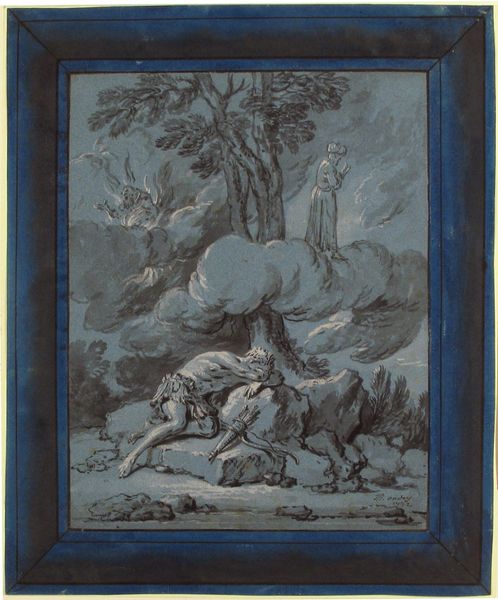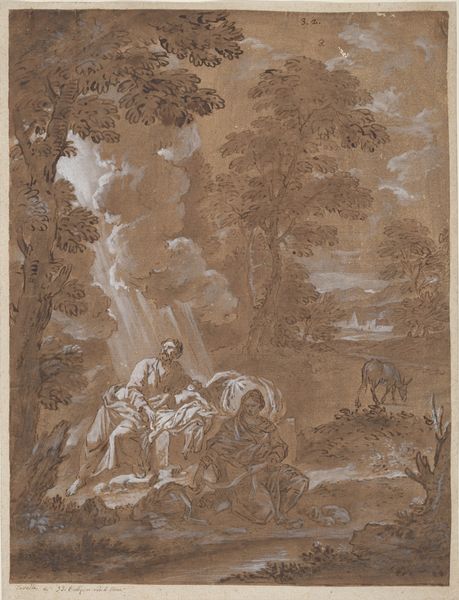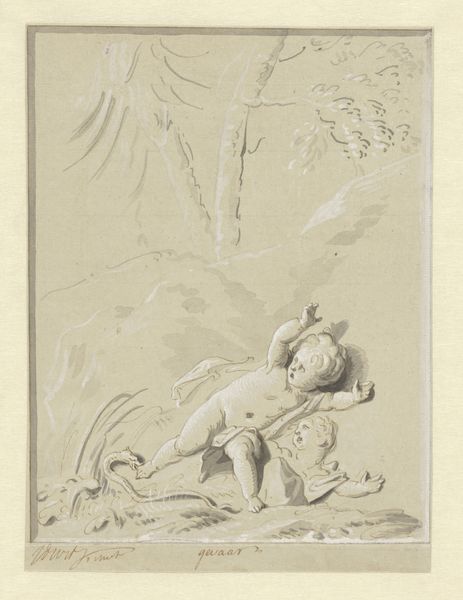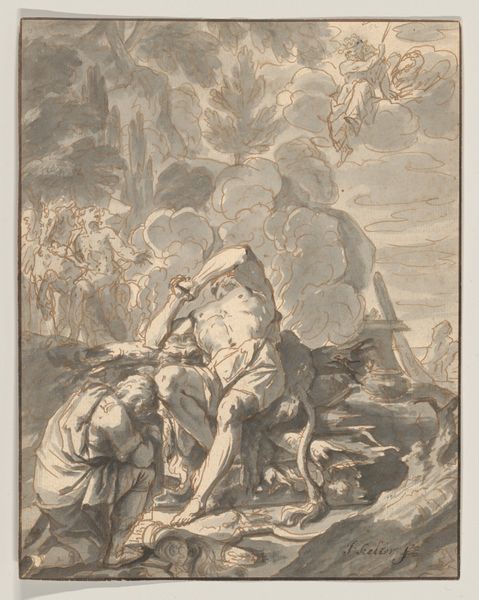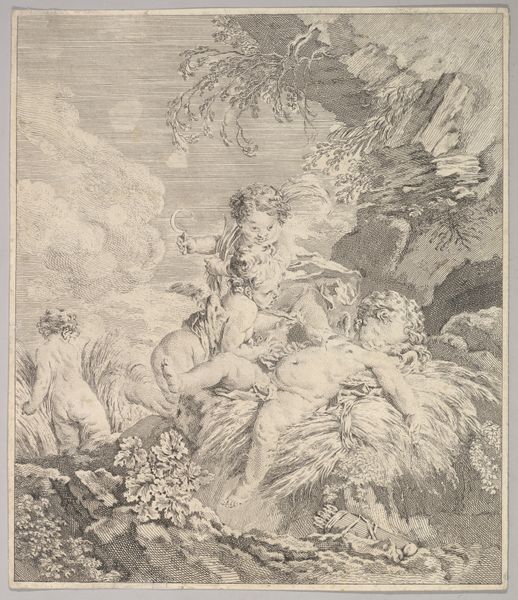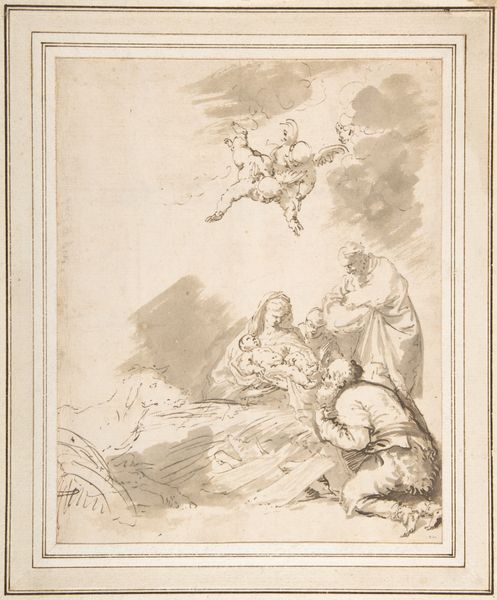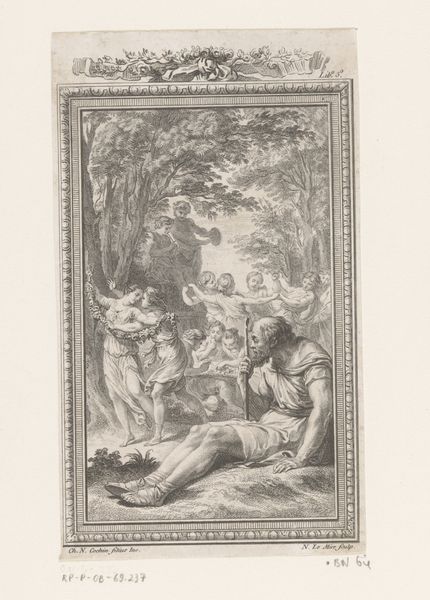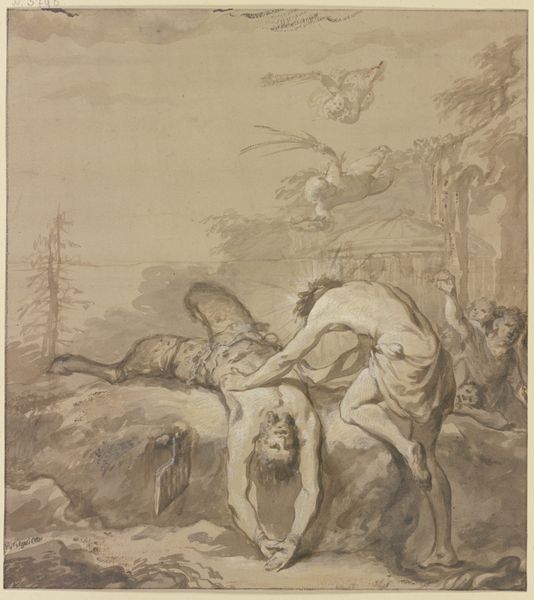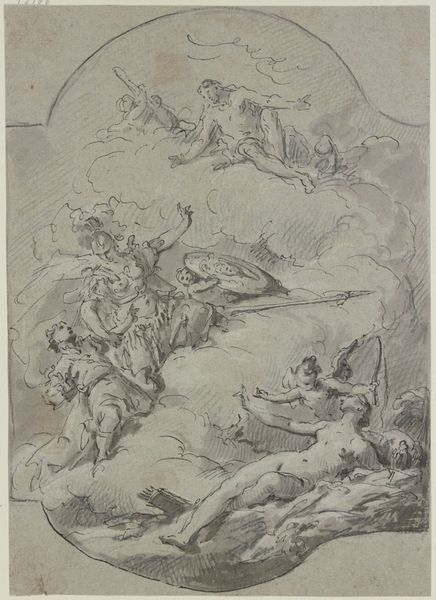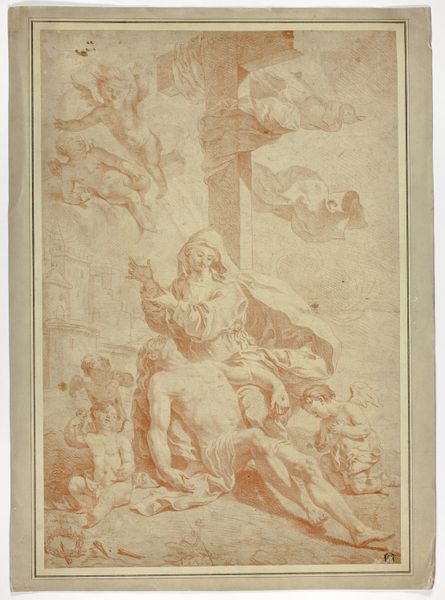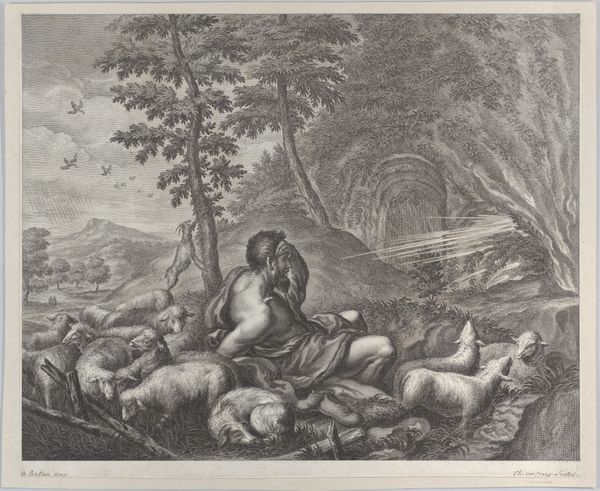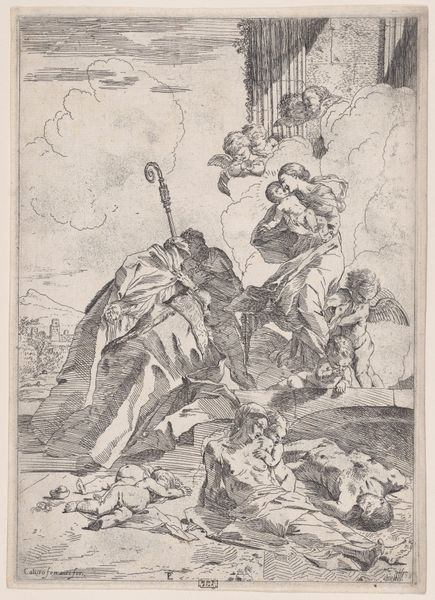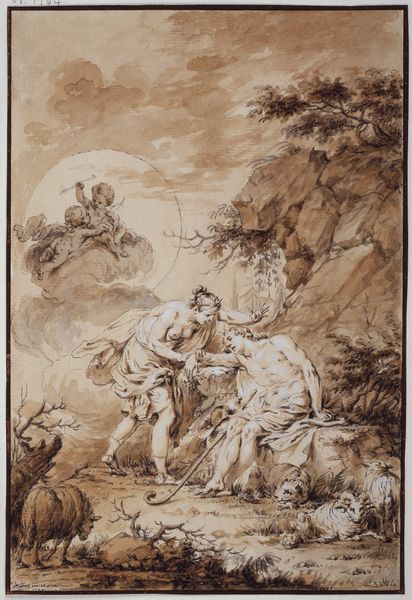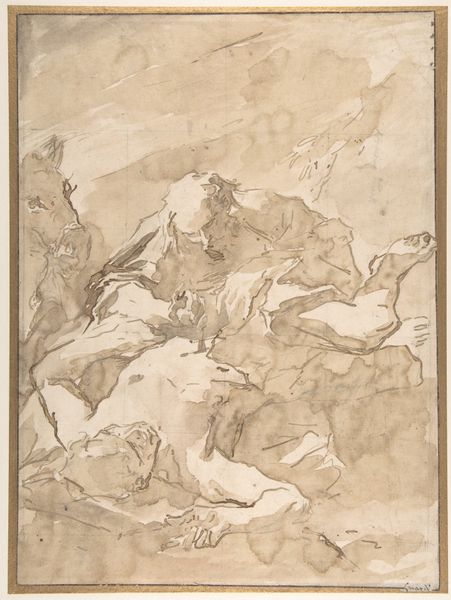
drawing, painting, paper, pencil
#
portrait
#
drawing
#
baroque
#
animal
#
painting
#
landscape
#
figuration
#
paper
#
oil painting
#
pencil
#
france
Dimensions: 9 5/8 × 7 1/4 in. (24.45 × 18.42 cm) (image)11 3/4 × 9 11/16 in. (29.85 × 24.61 cm) (sight)18 7/8 × 16 1/4 × 1 in. (47.94 × 41.28 × 2.54 cm) (outer frame)
Copyright: Public Domain
Curator: Here we have Jean-Baptiste Oudry's "Le Lion," a work dating from between 1729 and 1734, residing here at the Minneapolis Institute of Art. What strikes you first about it? Editor: It's the monochromatic palette—almost like a dreamscape. Eerie and majestic at the same time, a study in power conveyed through muted tones, but a baroque lion is kind of hilarious. Curator: Indeed, the use of blue paper as a ground is significant. It provides a base tone onto which Oudry built his composition using black chalk, heightened with white chalk. This "three chalks" method was quite popular in the 18th century, giving drawings a painterly quality. Oudry also did quite a few hunting scenes that captured King Louis XV's famous hunts. Do you find a link here between the symbol and what the work does for the king's persona? Editor: Hunting... Kings… Blue… Makes me feel a bit sad. The lion seems…staged. It’s meant to evoke authority, but I feel trapped artificiality, like a stage set designed to bolster a fragile ego, maybe Louis XV himself? Curator: Interesting. Consider how lions functioned in the symbolic vocabulary of the time. Lions were commonly employed as symbols of royalty and strength. The seemingly odd pairing of the lion with gazelles and a monkey could represent a hierarchy within nature, mirroring the social order. Editor: I like how you mention the hierarchy. The animals in the back feel real while this guy just looks silly. But thinking about what these Baroque depictions mean...it’s like these poor creatures are characters drafted into a theatre production to emphasize someone's control, which rings terribly to me. Curator: Perhaps the charm lies in the anachronism itself. We now look back on the trappings of power with a healthy dose of skepticism. But the drawing still holds a strange allure because, despite all its pomp and symbolic assertion, Oudry has breathed life into the king of beasts. Editor: Right, seeing beyond the political veneer, perhaps it's a testament to the skill of artists like Oudry who, even when tasked with propaganda, can’t help but let a flicker of something genuine slip through. That spark of truth might be why we still pause before such images, centuries later.
Comments
minneapolisinstituteofart almost 2 years ago
⋮
This is an illustration to a Fable written as a poem in the 1600s. The King of Beasts encounters a monkey, cast as the wise counselor. The lion asks the monkey to explain how, as a leader, he can avoid self-aggrandizement. The monkey responds by telling a story of two donkeys in conversation, who excessively congratulate each other, thus blinding themselves to their own faults. To instruct his majesty how his behavior ought to be, the monkey knows he must tread lightly, else he’d risk a fate unsightly. The author of the fable, Jean de La Fontaine, built on a Latin expression asinus asinum fricat (the donkey rubs the donkey). The fable is one of hundreds written by La Fontaine, and they became standards of French literature. Jean-Baptiste Oudry loved them so much that he illustrated them in 276 whimsical drawings using brushes and ink on blue paper.
Join the conversation
Join millions of artists and users on Artera today and experience the ultimate creative platform.
